Research on the Jet Characteristics and Dephosphorization Efficiency of Converter Oxygen Lance Blowing CO2-O2 Mixed Gas
Abstract
:1. Introduction
2. Numerical Simulation
2.1. Geometric Model and Grid Partition
2.2. Simulation Schemes and Calculation Procedure
2.3. Governing Equations and Turbulence Model
2.4. Combustion Model and Radiation Model
2.5. Model Validation
3. Results of the Numerical Simulation
3.1. Features of Combustion Field and Its Influence on Jet Characteristics
3.1.1. Features of Combustion Field
3.1.2. Influence of Combustion on Jet Characteristics
3.2. Effects of CO2-O2 Mixing Ratio on Jet Characteristics
3.2.1. Combustion Field Analysis
3.2.2. Flow Field Analysis
4. Industrial Experiment
4.1. Experimental Conditions
4.2. Experiment Results
5. Conclusions
- (1)
- There is significant difference in the temperature field before and after activating the combustion model. Combustion reaction between the supersonic oxygen jet and the ambient environment occurs, forming the combustion flame. The combustion flame is mainly distributed in the area between multiple jets. For the multi-nozzle oxygen lance, inner side of the supersonic jet is easier to be ignited than the outer side.
- (2)
- The combustion reaction can hardly affect the high-velocity region of the jet. While the influence of combustion on low-velocity region of the jet is obvious, both the velocity of jet and the diameter of jet increase obviously. Overall, the combustion reaction has a noticeable influence on the jet characteristics, which should not be ignored.
- (3)
- Maximum temperature of the combustion flame decreases slightly with the increase of CO2 mixing ratio. More importantly, as the CO2 mixing ratio increases, the high temperature zone of combustion flame moves away from the lance tip significantly, which is beneficial to reduce the heat flux intensity of lance tip and prolong the service life of oxygen lance.
- (4)
- Although the increase of CO2 mixing ratio has little effect on the jet velocity distribution, but larger dynamic pressure of the jet at the molten bath surface can be obtained, which means stronger impact capacity of the jet.
- (5)
- The industrial experiment shows that better dephosphorization performance can be achieved by mixing 15 vol.% CO2 into the oxygen during the dephosphorization period, the averaged end-point [P] content is reduced from 0.0155 wt.% to 0.0129 wt.%, and the fluctuation range of end-point [P] content becomes smaller.
Author Contributions
Funding
Data Availability Statement
Conflicts of Interest
References
- Li, Q.; Chen, Z.A.; Zhang, J.T.; Liu, L.C.; Li, X.C.; Jia, L. Positioning and revision of CCUS technology development in China. Int. J. Greenh. Gas Con. 2016, 46, 282–293. [Google Scholar] [CrossRef]
- Wang, Y.; Guo, C.H.; Chen, X.J.; Jia, L.Q.; Guo, X.N.; Chen, R.S.; Zhang, M.S.; Chen, Z.Y.; Wang, H.D. Carbon peak and carbon neutrality in China: Goals, implementation path and prospects. China Geol. 2021, 4, 720–746. [Google Scholar] [CrossRef]
- Mannion, F.J.; Fruehan, R.J. Decarburization kinetics of liquid Fe−Csat alloys by CO2. Metall. Mater. Trans. B 1989, 20, 853–861. [Google Scholar] [CrossRef]
- Sani, D.R.; Belton, G.R. Interfacial reaction kinetics in the decarburization of liquid iron by carbon dioxide. Metall. Trans. B 1976, 7, 235–244. [Google Scholar] [CrossRef]
- Nomura, H.; Mori, K. Kinetics of decarburization of liquid iron by Ar-CO2 gas mixture. Tetsu—Hagane 1972, 58, 1603–1605. [Google Scholar] [CrossRef]
- Niiri, Y.; Ito, K.; Sano, K. Research on the rates of decarburization and oxidation of molten iron alloys with CO2-Ar atmosphere. Tetsu—Hagane 1969, 55, 437–438. [Google Scholar] [CrossRef]
- Sain, D.R.; Belton, G.R. The influence of sulfur on interfacial reaction kinetics in the decarburization of liquid iron by carbon dioxide. Metall. Trans. B 1978, 9, 403–407. [Google Scholar] [CrossRef]
- Jin, R.J.; Zhu, R.; Feng, L.X.; Yin, Z.J. Experimental study of CO2-O2 mixed blowing in steelmaking. J. Univ. Sci. Technol. Beijing 2007, 29, 77–86. [Google Scholar]
- Yin, Z.J.; Zhu, R.; Yi, C.; Chen, B.Y.; Wang, C.Y.; Ke, J.X. Fundamental research on controlling BOF dust by COMI steelmaking process. Iron Steel 2009, 44, 92–95. [Google Scholar]
- Yi, C.; Zhu, R.; Chen, B.Y.; Wang, C.R.; Ke, J.X. Experimental research on reducing the dust of BOF in CO2 and O2 mixed blowing steelmaking process. ISIJ Int. 2009, 49, 1694–1699. [Google Scholar] [CrossRef]
- Zhu, R.; Bi, X.R.; Lv, M.; Liu, R.Z.; Bao, X. Research on steelmaking dust based on difference of Mn, Fe and Mo vapor pressure. Adv. Mater. Res. 2011, 284, 1216–1222. [Google Scholar]
- Yi, C.; Zhu, R.; Yin, Z.; Hou, N.; Chen, B.; Wang, C.R.; Ke, J.X. Experimental research of COMI steelmaking process based on 30t converter. Chin. J. Process Eng. 2009, 9, 228–231. [Google Scholar]
- Zhang, W.; Li, Z.Z.; Zhu, R.; Liu, R.Z. Experiment study of CO2 blowing in steelmaking process. Ind. Heat. 2015, 44, 41–44. [Google Scholar]
- Lv, M.; Zhu, R.; Wei, X.Y.; Wang, H.; Bi, X.R. Research on top and bottom mixed blowing CO2 in converter steelmaking process. Steel Res. Int. 2012, 83, 11–15. [Google Scholar] [CrossRef]
- Lv, M.; Zhu, R.; Bi, X.R.; Wei, N.; Wang, C.R.; Ke, J.X. Fundamental research on dephosphorization of BOF by COMI steelmaking process. Iron Steel 2011, 46, 31–35. [Google Scholar]
- Zhu, R.; Han, B.C.; Dong, K.; Wei, G.S. A review of carbon dioxide disposal technology in the converter steelmaking process. Int. J. Miner. Metall. Mater. 2020, 27, 1421–1429. [Google Scholar] [CrossRef]
- Tago, Y.; Higuchi, Y. Fluid Flow Analysis of Jets from Nozzles in Top Blown Process. ISIJ Int. 2003, 43, 209–215. [Google Scholar] [CrossRef]
- Lv, M.; Zhu, R.; Guo, Y.G.; Wang, Y.W. Simulation of Flow Fluid in the BOF Steelmaking Process. Metall. Mater. Trans. B 2013, 44, 1560–1571. [Google Scholar] [CrossRef]
- Higuchi, Y.; Tago, Y. Effect of Lance Design on Jet Behavior and Spitting Rate in Top Blown Process. ISIJ Int. 2001, 41, 1454–1459. [Google Scholar] [CrossRef]
- Lv, M.; Li, H.; Lin, T.C.; Xie, K.; Xue, K. Behavior of Gas–Slag–Metal Emulsion with Nozzle-Twisted Lance in Converter Steelmaking Process. Steel Res. Int. 2021, 92, 2100103. [Google Scholar] [CrossRef]
- Lv, M.; Li, H.; Xing, X.D.; Lin, T.C.; Hu, S.Y.; Xie, K. Variation in Multiphase Flow Characteristics by Nozzle-Twisted Lance Blowing in Converter Steelmaking Process. Steel Res. Int. 2021, 93, 2100409. [Google Scholar] [CrossRef]
- Feng, C.; Zhu, R.; Dong, K.; Wei, G.S.; Han, B.C.; Li, W.F.; Wu, W.H. Effects of Nozzle Layout and Parameters on the Jet Characteristics of a CO2 + O2 Mixed Oxygen Lance. Metall. Mater. Trans. B 2021, 52, 425–439. [Google Scholar] [CrossRef]
- Nonomura, T.; Fujii, K. Overexpansion Effects on Characteristics of Mach Waves from a Supersonic Cold Jet. AIAA J. 2011, 49, 2282–2294. [Google Scholar] [CrossRef]
- Li, Q.; Li, M.M.; Li, L.; Zou, Z.S. Numerical analysis of oxygen jet characteristic for BOF convertor top-blown process based on CFD method. J. Northeast Univ. (Nat. Sci.) 2013, 34, 828–831. [Google Scholar]
- Li, M.M.; Li, Q.; Kuang, S.B.; Zou, Z.S. Coalescence Characteristics of Supersonic Jets from Multi-Nozzle Oxygen Lance in Steelmaking BOF. Steel Res. Int. 2015, 86, 1517–1529. [Google Scholar] [CrossRef]
- Alam, M.; Naser, J.; Brooks, G. Computational Fluid Dynamics Simulation of Supersonic Oxygen Jet Behavior at Steelmaking Temperature. Metall. Mater. Trans. B 2010, 41, 636–645. [Google Scholar] [CrossRef]
- Hu, S.Y.; Zhu, R.; Dong, K. Numerical simulation research on flow fields in combined blown converter at steelmaking temperature. Chin. J. Eng. 2018, 40, 108–115. [Google Scholar]
- Liu, F.H.; Zhu, R.; Dong, K.; Hu, S.Y. Effect of Ambient and Oxygen Temperature on Flow Field Characteristics of Coherent Jet. Metall. Mater. Trans. B 2015, 47, 228–243. [Google Scholar] [CrossRef]
- Sumi, I.; Okuyama, G.; Nabeshima, S.; Matsuno, H.; Kishimoto, Y. Behavior of Top-Blown Jet under Reduced Pressure. ISIJ Int. 2007, 47, 73–79. [Google Scholar] [CrossRef]
- Zhao, F.; Zhang, Y.L.; Zhu, R.; Zhu, L.F.; Tian, D.D. Numerical simulation on effect of environment pressure on supersonic oxygen jet characteristics. China Metall. 2014, 24, 22–25. [Google Scholar]
- Gou, H.; Irons, G.A.; Lu, W.K. Mathematical modeling of post combustion in a KOBM converter. Metall. Trans. B 1993, 24, 179–188. [Google Scholar] [CrossRef]
- Zhao, F.; Liu, F.H.; Sun, D.B. Behaviors of Supersonic Oxygen Multi-jets with various preheating temperatures. Metall. Mater. Trans. B 2021, 52, 2626–2641. [Google Scholar] [CrossRef]
- Launder, B.E.; Spalding, D.B. Lectures in Mathematical Model of Turbulence; Academic Press: London, UK, 1972; p. 124. [Google Scholar]
- Hu, S.Y.; Zhu, R.; Dong, K.; Liu, R.Z. Numerical Simulation and Industrial Experimental Research on the Coherent Jet with “CH4 + N-2” Mixed Fuel Gas. Metall. Mater. Trans. B 2018, 49, 2584–2598. [Google Scholar] [CrossRef]
- Li, P.F.; Dally, B.B.; Mi, J.C.; Wang, F.F. MILD oxy-combustion of gaseous fuels in a laboratory-scale furnace. Combust. Flame 2013, 160, 933–946. [Google Scholar] [CrossRef]
- Li, P.F.; Mi, J.C.; Dally, B.B. Premixed moderate or intense low-oxygen dilution (MILD) combustion from a single jet burner in a laboratory-scale furnace. Energy Fuels 2011, 25, 2782–2793. [Google Scholar] [CrossRef]
- Mi, J.C.; Li, P.F.; Dally, B.B.; Craig, R.A. Importance of initial momentum rate and air-fuel premixing on moderate or intense low oxygen dilution (MILD) combustion in a recuperative furnace. Energy Fuels 2009, 23, 5349–5356. [Google Scholar] [CrossRef]
- Mardani, A.; Tabejamaat, S.; Ghamari, M. Numerical study of influence of molecular diffusion in the MILD combustion regime. Combust. Theor. Model 2010, 14, 747–774. [Google Scholar] [CrossRef]
- Christo, F.C.; Dally, B.B. Modeling turbulent reacting jets Issuing into a hot and diluted coflow. Combust. Flame 2005, 142, 117–129. [Google Scholar] [CrossRef]
- Hu, S.Y.; Zhu, R.; Dong, K.; Wu, W.H. New Process for Resource Utilization of Converter Gas and Simulation on the Combustion of Converter Gas. ISIJ Int. 2018, 58, 776–783. [Google Scholar] [CrossRef] [Green Version]
- Chui, E.H.; Raith, G.D. Computation of radiant heat transfer on a nonorthogonal mesh using the finite-volume method. Numer. Heat Transf. B-Fundam. 1993, 23, 269–288. [Google Scholar] [CrossRef]


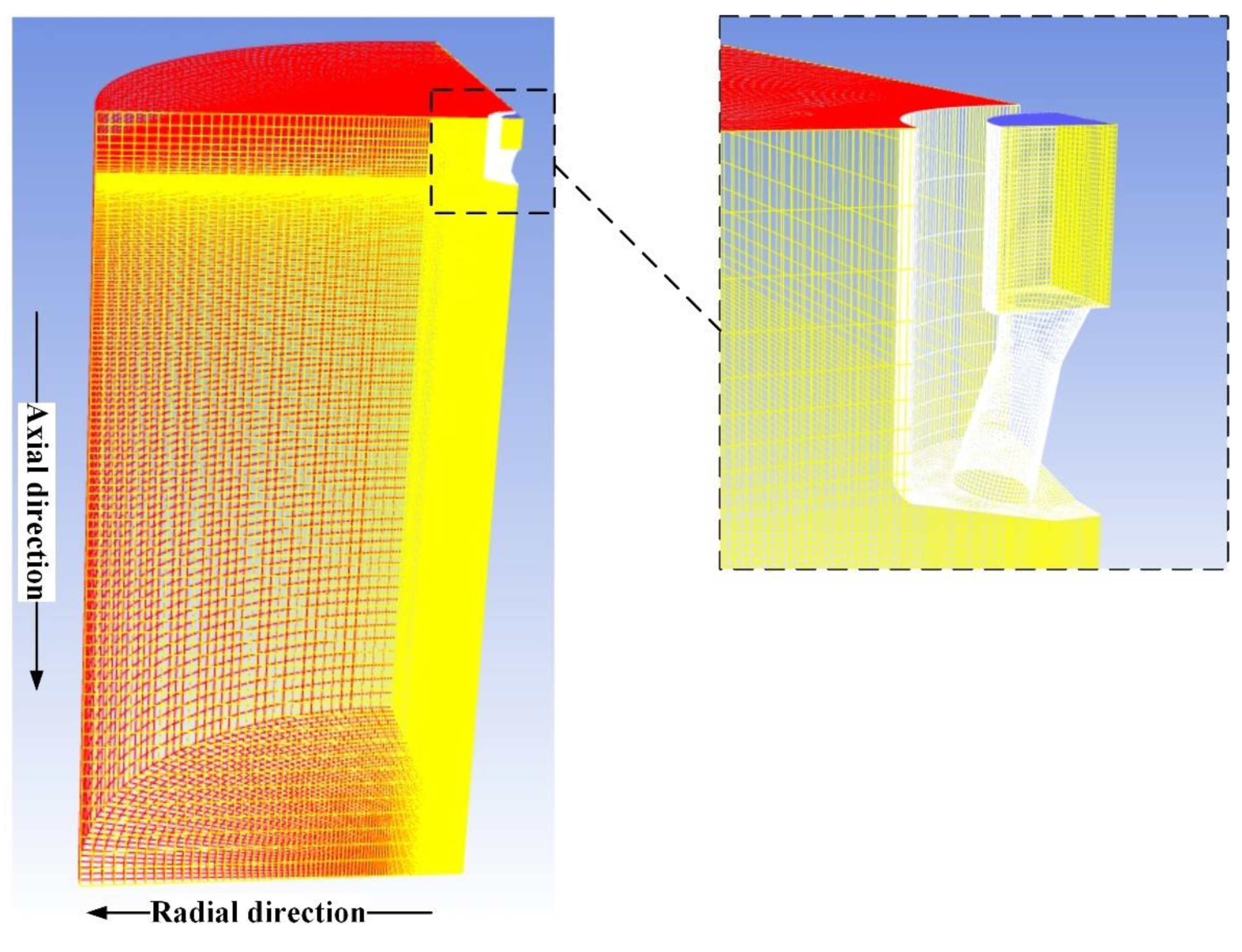
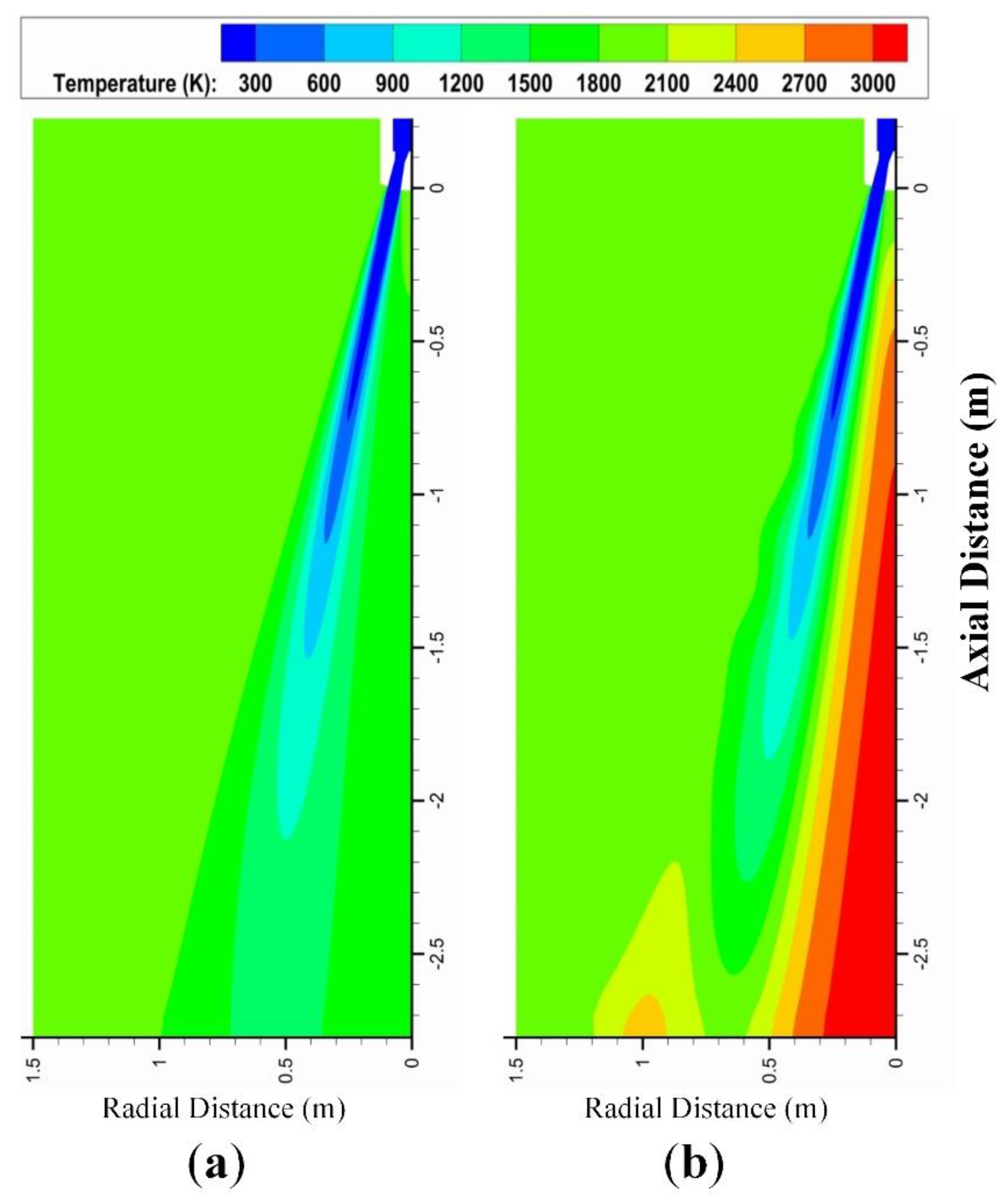
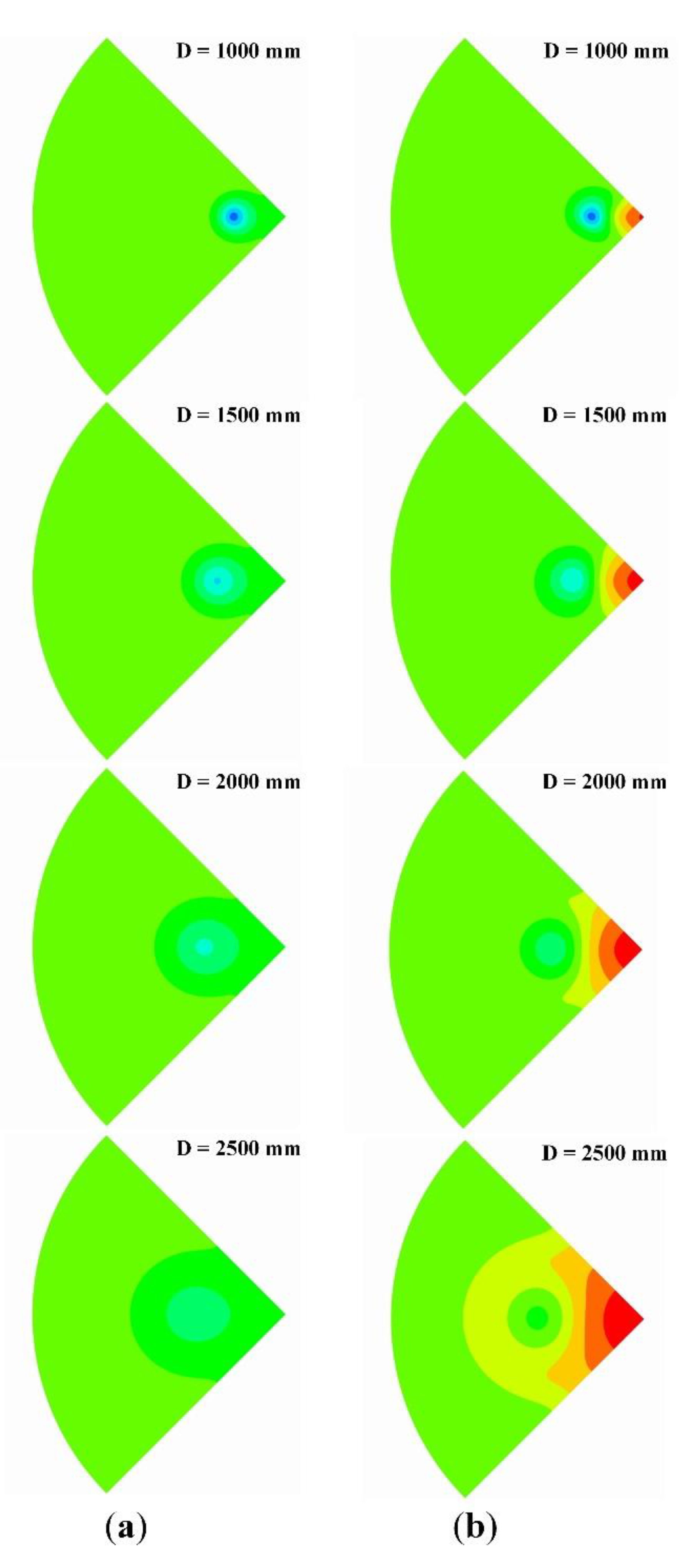


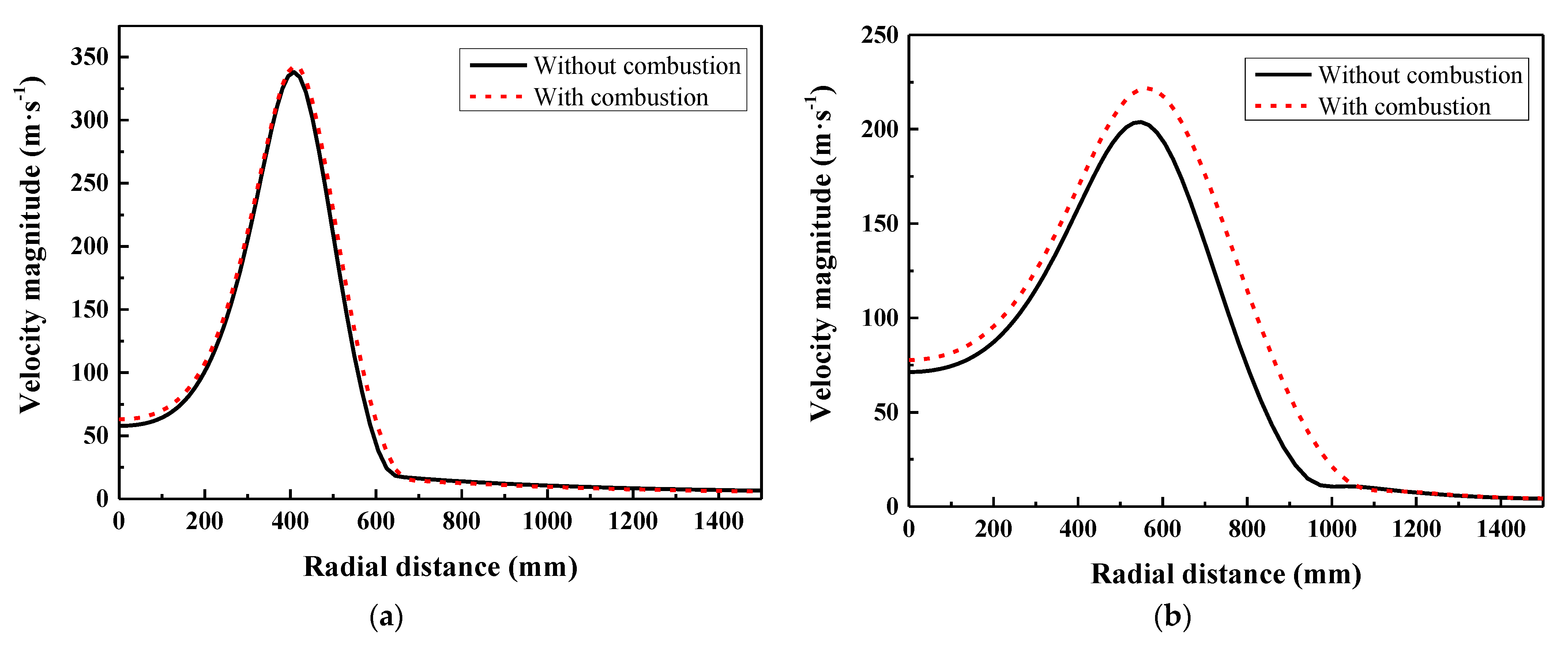

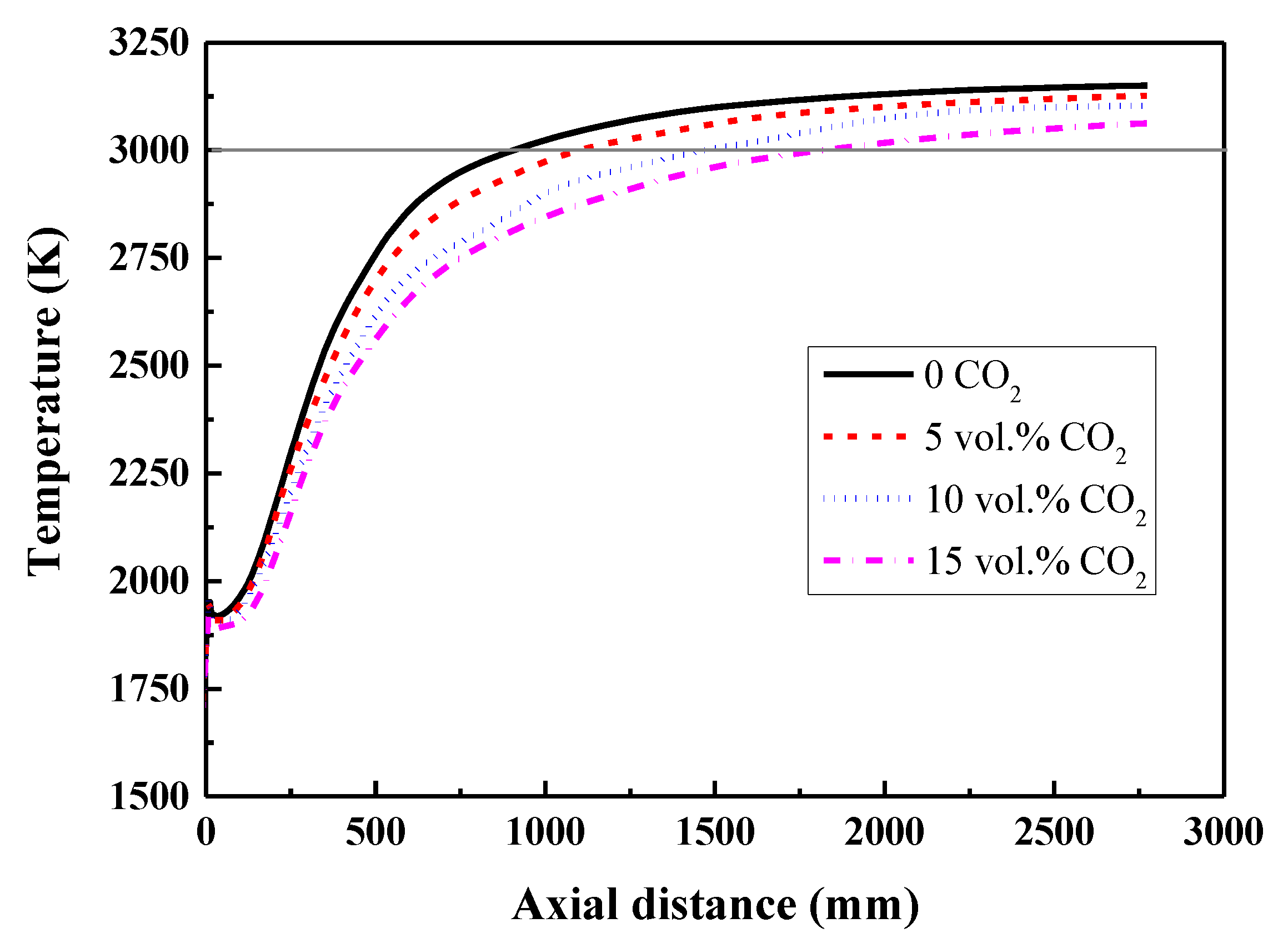

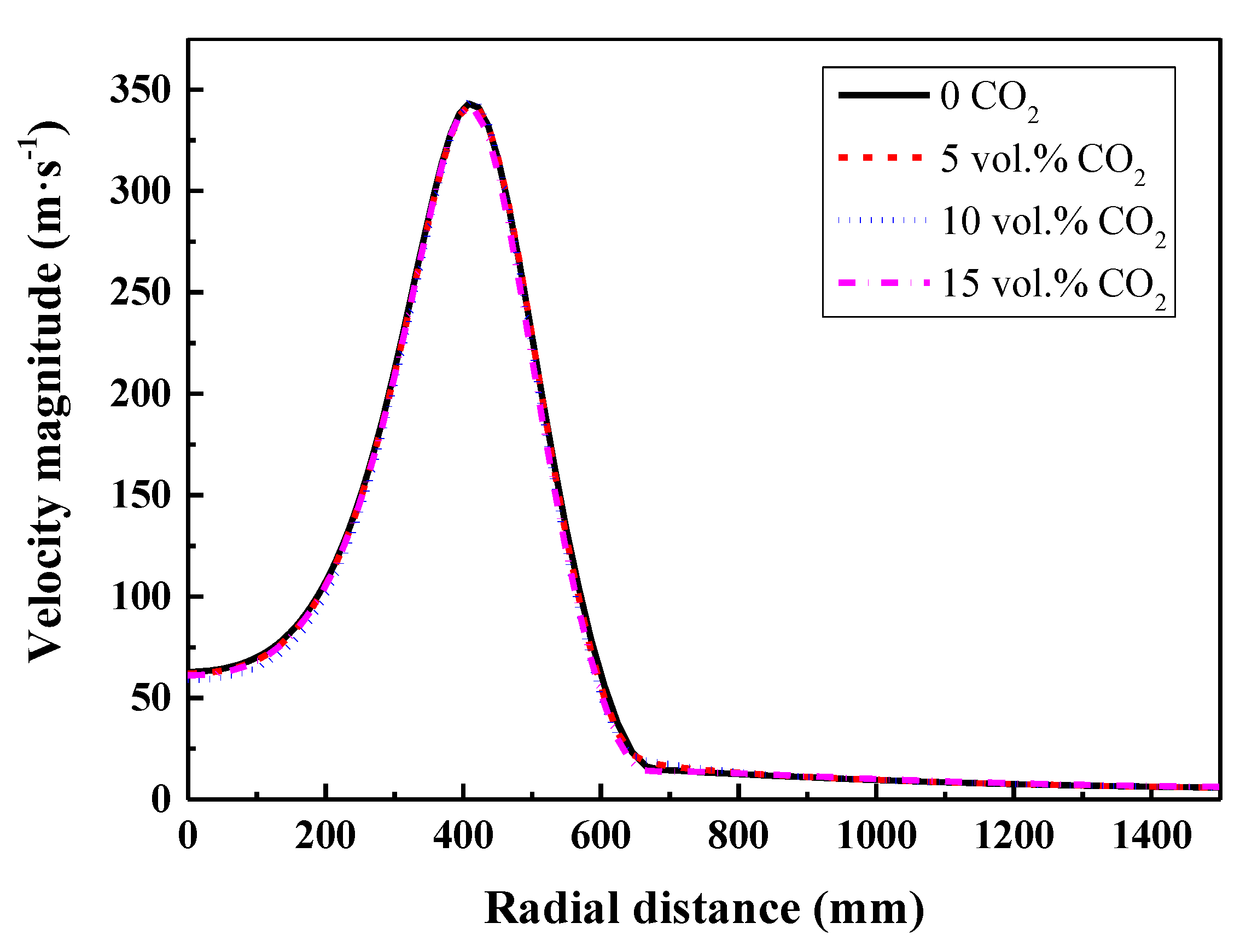
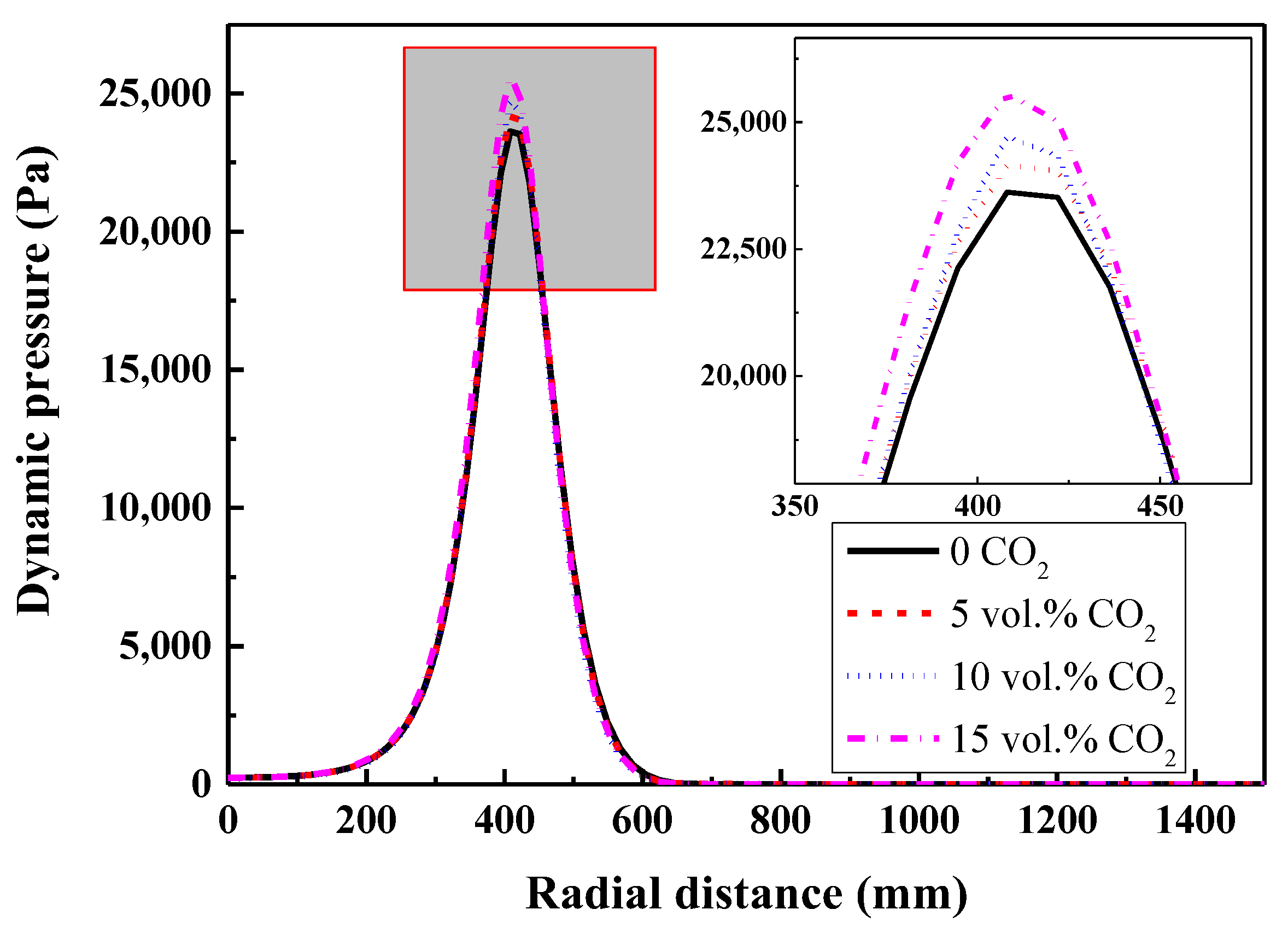
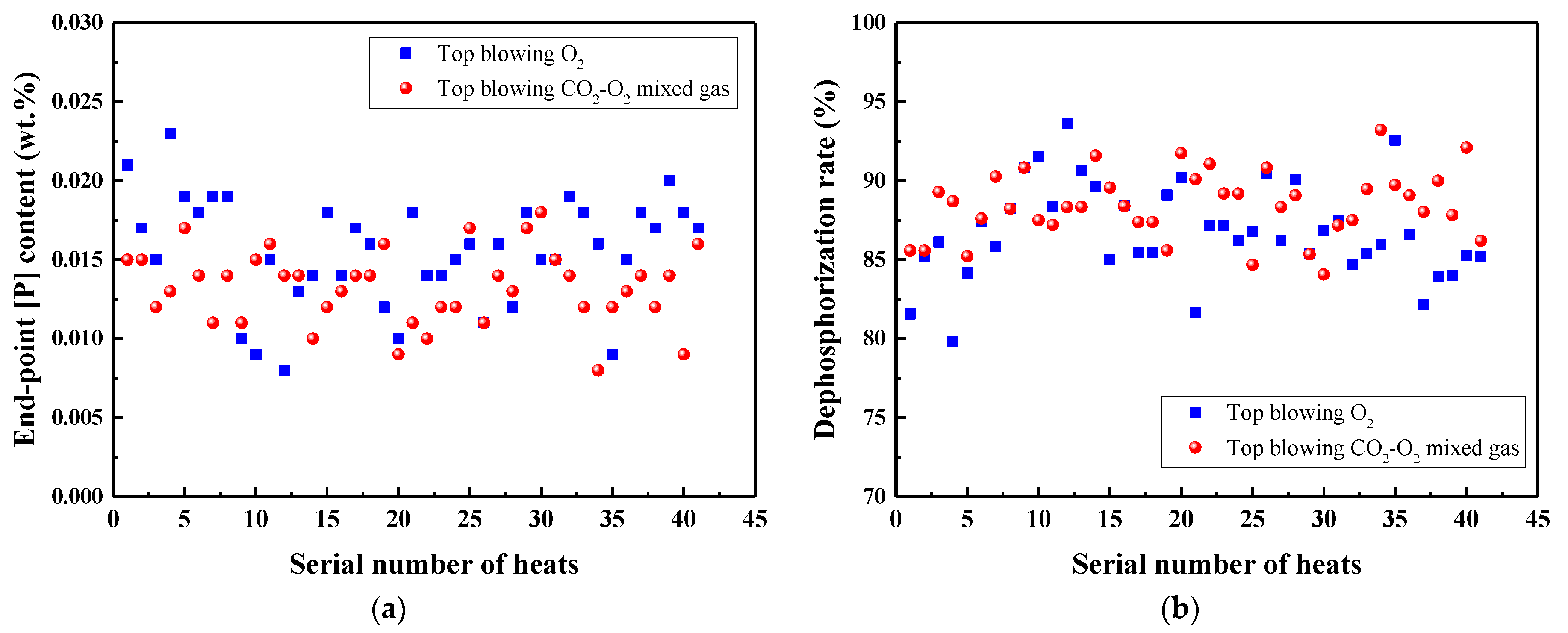
| No. | Total Flow Rate of the CO2-O2 Mixed Gas | Mixing Ratio of CO2 | Setting Flow Rate of CO2 | Setting Flow Rate of O2 |
|---|---|---|---|---|
| 1 | 24,000 Nm3·h−1 | 0 | 0 | 24,000 Nm3·h−1 |
| 2 | 24,000 Nm3·h−1 | 5 vol.% | 1200 Nm3·h−1 | 22,800 Nm3·h−1 |
| 3 | 24,000 Nm3·h−1 | 10 vol.% | 2400 Nm3·h−1 | 21,600 Nm3·h−1 |
| 4 | 24,000 Nm3·h−1 | 15 vol.% | 3600 Nm3·h−1 | 20,400 Nm3·h−1 |
| [C], wt.% | [Si], wt.% | [Mn], wt.% | [P], wt.% | [S], wt.% | T, K | |
|---|---|---|---|---|---|---|
| Fluctuation range | 3.79~4.35 | 0.48~0.81 | 0.59~0.83 | 0.098~0.143 | 0.029~0.057 | 1537~1596 |
| Average value | 4.13 | 0.67 | 0.70 | 0.116 | 0.043 | 1578 |
Publisher’s Note: MDPI stays neutral with regard to jurisdictional claims in published maps and institutional affiliations. |
© 2022 by the authors. Licensee MDPI, Basel, Switzerland. This article is an open access article distributed under the terms and conditions of the Creative Commons Attribution (CC BY) license (https://creativecommons.org/licenses/by/4.0/).
Share and Cite
Wei, G.; Zhou, C.; Hu, S.; Tian, J.; Zhu, R.; Wang, D.; Zhu, Q. Research on the Jet Characteristics and Dephosphorization Efficiency of Converter Oxygen Lance Blowing CO2-O2 Mixed Gas. Metals 2022, 12, 1457. https://doi.org/10.3390/met12091457
Wei G, Zhou C, Hu S, Tian J, Zhu R, Wang D, Zhu Q. Research on the Jet Characteristics and Dephosphorization Efficiency of Converter Oxygen Lance Blowing CO2-O2 Mixed Gas. Metals. 2022; 12(9):1457. https://doi.org/10.3390/met12091457
Chicago/Turabian StyleWei, Guoli, Changli Zhou, Shaoyan Hu, Jun Tian, Rong Zhu, Deyong Wang, and Qingde Zhu. 2022. "Research on the Jet Characteristics and Dephosphorization Efficiency of Converter Oxygen Lance Blowing CO2-O2 Mixed Gas" Metals 12, no. 9: 1457. https://doi.org/10.3390/met12091457
APA StyleWei, G., Zhou, C., Hu, S., Tian, J., Zhu, R., Wang, D., & Zhu, Q. (2022). Research on the Jet Characteristics and Dephosphorization Efficiency of Converter Oxygen Lance Blowing CO2-O2 Mixed Gas. Metals, 12(9), 1457. https://doi.org/10.3390/met12091457







